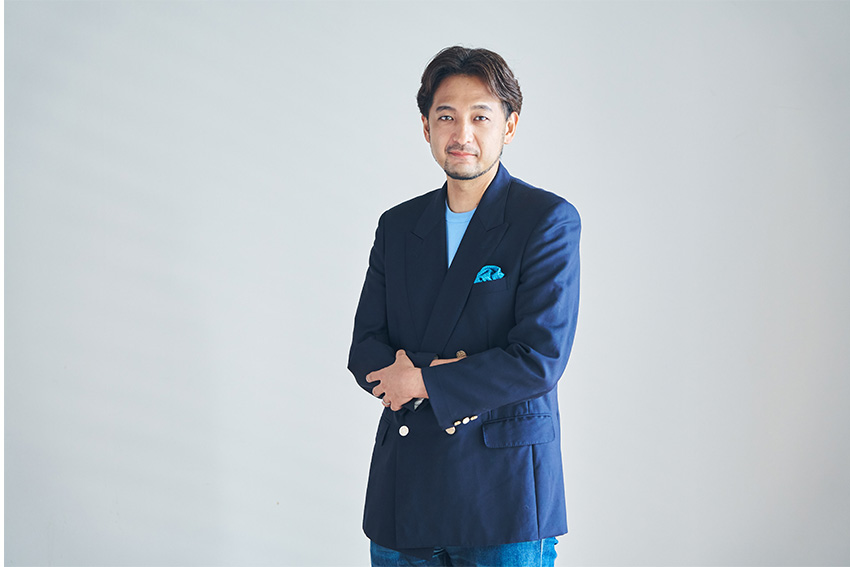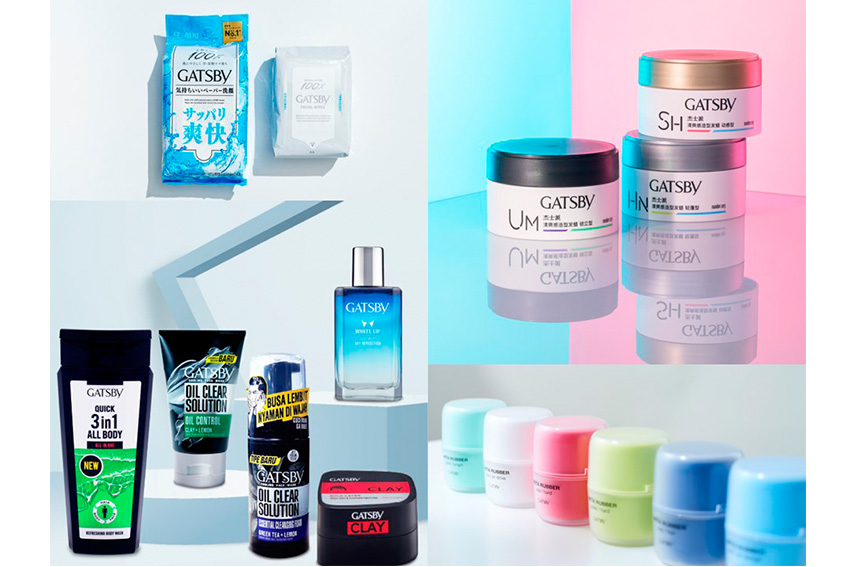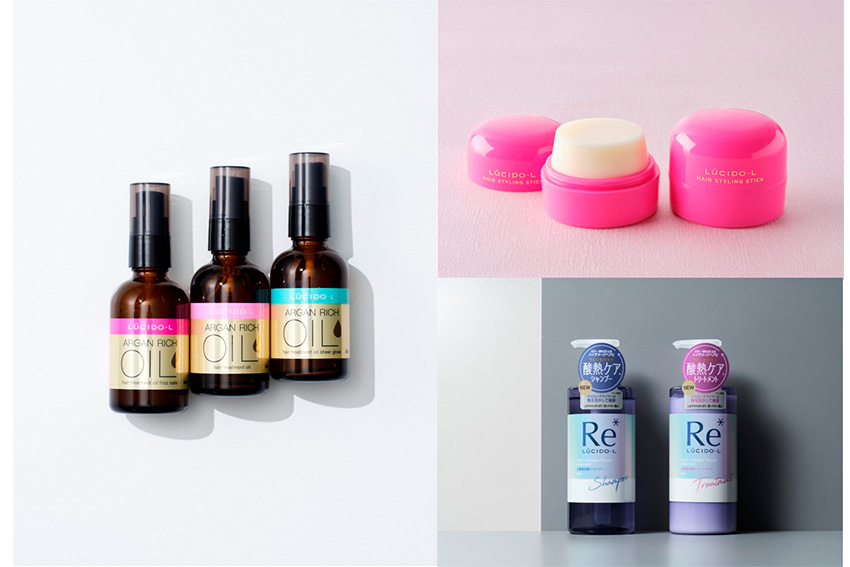Mandom goes beyond the norm to boldly bring wonder and inspiration to people’s everyday lives.

J-Beauty has historically faced stiff competition from Western brands that are very well-established and use very clean and slick marketing techniques. In more recent times, K-Beauty has challenged this and has become very popular when it comes to Asian beauty brands. However, Japan maintains a series of advantages. Japan is one of the world’s best ecosystems for R&D and Japanese companies cater to some of the world’s most demanding consumers. This is especially the case when it comes to health and beauty with Japan being very specific in terms of standards and quality. As the president of your company, what do you believe are the strengths of J-Beauty on the world stage?
First of all, what you mentioned about Japanese companies' R&D efforts and capabilities as well as Japan’s demanding consumer market is true. I want to explain it from a different perspective and point out some of the areas that may not often be highlighted. The strengths of the Japanese cosmetics industry are related to its diversity and uniqueness. K-Beauty have had relatively short histories. Our company on the other hand has over 100 years of history and companies such as Shiseido and Kao have even longer histories. This longer accumulated experience is one of the Japanese industry’s main strengths. Also, I visited Italy earlier this year and attended Cosmoprof in Bologna where there was an exhibition for K-Beauty that was strongly supported by the Korean government. K-Beauty focuses on pop culture and entertainment such as idols. It also focuses more on exterior beauty, and reaching out to the world as ‘Team Korea’ has been a strong driving force. However, each Japanese company has its uniqueness that it has developed over the years. Each company has its own features and we know our strengths and weaknesses.
As you mentioned, your group has a very long history and you have some very famous brands, especially in the men’s segment with Gatsby which is available in 12 countries throughout Asia. You also have Lucido which is a brand that focuses on older gentlemen over the age of 40, and you have expanded into brands for women with Bifesta and Pixy. First, when it comes to Gatsby, why has it been so successful not only here in Japan but also throughout Asia, and secondly, how are you looking to replicate that success with the other new brands that you have developed?
We launched our Gatsby products domestically in 1978 so it has over 46 years of history. Gatsby helped to create a new market for male cosmetics. At that time, Japanese men were quite reluctant to use cosmetics and preferred to only use water when washing their faces or styling their hair. Cosmetics were considered solely for females and it was taboo for Japanese men to use them. However, as a result of our marketing campaign and our Gatsby product lineup, we were able to get men to use cosmetics and body care products as part of their daily lives. Our company mission is to provide products for daily usage that are within an affordable range. With time, men’s mindset began to change from using water for styling hair to now using gels and waxes, and even dyeing their hair. This is part of the progression of men’s hairstyles. We were able to change their mindset and reach out to them by providing various products through Gatsby and that has been one of the reasons for its success in Japan.

Gatsby hair products
Our first overseas expansion was in the Philippines in 1958. We decided to enter the overseas market not because we thought we could produce at a lower cost but rather because there was a demand from a Chinese merchant who came to Japan and purchased many of our products as souvenirs. They told us that they wanted to set up a new business in their own country. However, the tariffs for exporting products from Japan were quite high. That was why we decided to establish a production base overseas to provide our products to the local merchants. Over the years, we were able to establish a robust sales network and in the 1980s and 1990s, Gatsby became popular, so we fully leveraged those existing sales channels to expand overseas.
For the past few decades, our overseas strategy has been to focus on each country’s market. We focus on each specific country and market and change the content and ingredients of the products according to the local needs. For example, Mandom Indonesia is not considered a Japanese company but rather a local company by the people there.
Something that we found very interesting with Gatsby’s product portfolio is that your company is not a generalist. You focus on very specific product segments and this is very apparent by the fact that you began with men’s cosmetics which was a small market back in 1978 and is increasingly becoming bigger. We see today that men are spending more and more every year on cosmetics and health products and all of the big cosmetics brands that have historically been focused on women are now beginning to focus on men. However, your company is doing the inverse. Having begun by focusing on men, over the past 10 years, you have been pushing new brands for the female segment. First, why did you decide to switch your focus to the female segment? Also, in terms of reputation, you are at a disadvantage compared to the companies that have been catering to the female segment for so long. How are you planning to overcome these disadvantages in terms of marketing?
Our company was established in 1927. Our initial business was the importation of perfume. We also produced some female cosmetics, so we actually started as a cosmetics company for women. In 1933, we first launched our haircare products for men, and in the 1950s and 1960s, we decided to focus primarily on the male cosmetics sector and became a pioneer in doing so. Over the next 20 to 30 years, we focused on men. However, in the meantime, for example in Indonesia, we had female cosmetics brands such as Pixy which became a huge brand next to Gatsby. Therefore, as a group, we have been catering to the female market for many years.
Mandom grew by focusing primarily on male cosmetics for a certain period. However, as the company grew, my predecessors realized the importance of re-entering the female cosmetics market as the female sector accounts for around 90% of the overall cosmetics market. We also had our previous experience of catering to female cosmetics. When we started our female cosmetics operation, it was important for us to reconsider our uniqueness and make the best use of our strengths and experience. To do so, we developed our own products in the 1990s such as Lucido-L which are styling products that cater to women and were based on the men’s products that we previously made.

Lucido-L products
In 2011, we launched a makeup cleansing product called Bifesta Cleansing Water Uruochi Mizu Cleansing. Conventionally after getting home, women have to wash their faces with water and cleanser at the basin or while taking a bath. However, sometimes, they may be so exhausted that they do not even want to do that. Water cleansing is a lotion-like cleansing solution containing lotion-derived cleansing ingredients that is soaked into a cotton pad and wiped off. The uniqueness of this product is important for us as we do not want to compete in the red ocean.
In your latest annual report, you said that the men’s cosmetics sector is now a mature market, with consumers being very knowledgeable about what they want. We would like to get your take on where that mature market finally evolves. Big brands such as Kose are talking about generationalist genderless products. Do you see a stage where it reaches the point where men and women use the same cosmetics, or will they always be distinct?
In a way, it could be said that there will be more commonalities between male and female cosmetics. However, that depends on people’s preferences. In an era when unisex may be a trend, there could be a more feminine taste to male cosmetics and vice versa with possible boyish elements to female cosmetics and fashion. However, factors such as body structure, gender, skin color, and age are important. For example, skincare products designed for people in their 20s are different from those designed for people in their 50s. Also, sebum care is different for men and women. These physical differences will remain in the future so specific cosmetics will be needed for each gender.
Earlier you mentioned that you wanted to avoid entering the red ocean market. One of the ways your company has done so has been through its commitment to R&D. This is particularly true when it comes to the track record you have in the body odor and antiperspirant sector in which you have received numerous accolades. Your company was the first to develop white-activated carbon which has great absorbing properties and as we mentioned previously, your company was based on the research paper that you published on the impact that GMA has on suppressing sweat glands. Looking to the future, what area of research are you going to be focusing on, and what types of new products and technologies do you anticipate coming up with?
We have been collaborating with academia in sweat gland research as well as penetration technology. When it comes to sweat gland research and antiperspirant technology, we have been working with Osaka University’s pharmaceutical department and have been offering a joint research program to both Japanese and overseas students and researchers. Recently, one of our executives visited Osaka University and we are now screening applicants from many countries. It is one of the unique programs in which you can study sweat glands, and researchers from Thailand, Indonesia, and other countries have been applying.
We have also been working together with Kitasato University in Tokyo in studying an agent that could carry the particles deeper into the skin. We are developing penetration technology together. Our company has an accumulated history of conducting research on men. Although it is hard to compare with other companies, we strongly believe that we are one of the very few companies that have expertise in men’s studies. Going forward, we would like to further strengthen our research on men and become the number-one men’s research and understanding product development company. We also want to strengthen our styling care products and our research on haircare. The skincare penetration technology that we are working on could also be utilized for other aspects as well. Furthermore, we want to strengthen our sweat gland research.
Your Vision 2027 plan is very ambitious. Its goal is to be useful to 1 billion consumers worldwide. This includes becoming a truly global company, innovating in marketing, and enhancing the brand value that you already have. You also want to increase your market share in women’s cosmetics. Can you give us an overview of the progress to date in achieving that target of 1 billion consumers?
Our Vision 2027 plan was generated 10 years ago. However, at that time, no one could have envisioned the COVID-19 pandemic. The blueprint that we laid out back then could not be fully realized in terms of quantitative measurement. However, our philosophy is not to become a comprehensive cosmetics company but rather become a one-and-only unique company. We want to establish new markets by ourselves as evident in our progression from men’s cosmetics to women’s cosmetics. We intend to fully utilize the strengths we have developed in men's cosmetics in women's cosmetics as well. It is important that we apply our strengths and experience to find the right markets. Our corporate philosophy is “Kenseibiraku” which means health, cleanliness, and beauty. “Raku” can mean happy,easy to use or fun. Our products must be easy to use and fun for our users. Although many comprehensive cosmetics manufacturers have the mindset of being healthy, clean, and beautiful, oftentimes the fun and easy-to-use part is forgotten. Stressing this is one of the unique characteristics of our company.
From the qualitative perspective, we believe that we are close to reaching the outcomes that we laid out in our plan. Our current sales target is JPY 100 billion and our objective is to cater to 1 billion people worldwide. Before, like many other companies, we were focusing on the Chinese market. However, the Chinese market is currently dwindling so it is important for us to move from China to other Asian nations and elsewhere around the world. We see India as one of the best options as the market there has huge potential. Ten years ago, we established a subsidiary in India. However, when adapting to Indian business, the stakes are quite high and we have not been able to accelerate the speed of our expansion there. We are currently looking at ways to strengthen our business in India as well as expand to other parts of the world. In the 1990s and 2000s, our company grew significantly in a short period as we expanded to Indonesia and other Asian countries. Now we see potential in South America, Europe, and the US. While it may be difficult to compete in Europe due to its traditional brands, we are currently conducting market research to find the most appropriate market for our growth and help us achieve the targets of our midterm plan.
There was something that caught our attention when we were looking at the performance of Mandom. If you look at your revenue growth since 2021, it is clear that your company has grown quite a lot. Your revenue growth has increased from around JPY 55-60 billion in 2021 to surpassing JPY 70 billion in 2023 which equated to around a 9% increase from one fiscal year to the next. Furthermore, you had a big surge in operating income with an increase of 40% and you beat EPS expectations by around 18%. However, this good performance has not been reflected in your market capitalization with the stock price having declined yearly over the past 2-3 years. There seems to be an imbalance between the performance of the company and the expectations or understanding of the market. As we progress toward your vision for 2027, do you think that this misalignment between the market and the company’s performance will be addressed?
When it comes to analyzing the situation of having a discrepancy between our share price and our profitability, pre-COVID-19, we had JPY 80 billion in consolidated income and an operating income of 10%. However, due to the rise in cost, the profit margin decreased. Also, from a macroscopic perspective, the Japanese cosmetics industry is not doing well and the day after companies announce their financial statements, the stock prices all go down. This is due to the investors being more focused on short-term investments with more lucrative businesses. However, the cosmetics industry oftentimes does not show immediate high profitability. The mindset of the investors has changed due to the Covid-19 pandemic and the war in Ukraine. We have a target of achieving JPY 100 billion in turnover and JPY 9 billion in operating profit, and we are currently trying to raise the operating profit back to 9% as it is currently lower than that.
We have been making a profit over the past few years. However, our profitability has been decreasing. That is why we must change our business structure so that we can focus on increasing our profitability and balance the costs to ensure that we are adequately valued in the market.
It was very interesting to hear you speak about Mandom’s almost 100-year history. Are there any goals or ambitions that you would like to achieve during your time as president before passing the company to your successor?
I am a member of the founding family and have been fortunate to have studied in Spain and acquired an MBA. Also, I am the first generation that has worked overseas having spent three years at our office in Singapore learning about and developing the markets in the area. I want to fully integrate my own experience into helping the company expand overseas not only in Asia but also across the globe. I want our company to have a global mindset.
Also, some of our product ranges, such as Gatsby, target people in their twenties, while others, such as Lucido, target people in their forties and older. Due to the aging population in Japan and around the globe, we need to diversify our product lineup to include products for the senior generations. New product development and the provision of a holistic range of products are vital when it comes to raising the quality of our company. They are my goals for the future.
My goal is to make Mandom an active and fun company for both our employees and our customers. We have always been, and must continue to be, a company that enables people involved with Mandom to share in the joys and happiness, the moments, and the like. I want our employees to be happy to work for this company and excited to develop new products and expand to new markets.
For more information, visit their website at: https://www.mandom.co.jp/en/
0 COMMENTS